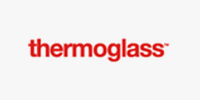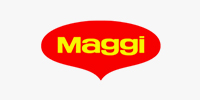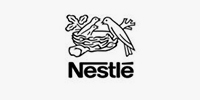Main Manufacturing Processes of Plastic Bottles
The first stage of a typical 2-step reheat and blow machine bottle manufacturing process is injection molding. Plastic pellets are plasticized in the barrel of an injection molding machine where the plastic is melted by heat and the shearing action of a feed screw. The plastic is then injected into multiple-cavity molds where it assumes the shape of long, thin tubes. These tubes, called parisons, usually include the formed necks and threads that will be used to cap the bottles that are yet to come. PET parisons, or pre-forms, are easily shipped to bottling facilities because they’re much more compact than fully formed bottles.
During the re-heat process, the parisons are loaded into a feeder and run through an unscrambler, which orients the parisons for feeding into the blow molding machine. The parisons are heated by passing by quartz heaters and then enter the mold. Here, a thin steel rod, called a mandrel, slides into the neck of the parison where it fills the parison with highly pressurized air, and stretch blow molding begins: as a result of the pressurized air, heat, and pressure, the parison is blown and stretched into the mold axially and radially, where it assumes a bottle shape. This process produces what is called a bi-axially oriented bottle which provides a CO2 barrier ideal for containing carbonated beverages.
The mold must be cooled relatively quickly, so that that the newly formed component is set properly. There are several cooling methods, both direct and indirect, that can effectively cool the mold and the plastic. Water can be coursed through pipes surrounding the mold, which indirectly cools the mold and plastic. Direct methods include using pressurized air or carbon dioxide directly on the mold and plastic.
Once the bottle has cooled and set, it' s ready to be removed from the mold. If a continuous molding process has been used, the bottles will need to be separated by trimming the plastic in between them. If a non-continuous process has been used, sometimes excess plastic can seep through the mold during manufacturing and will require trimming. After removing the bottle from the mold and removing excess plastic, the plastic bottles are ready for transportation or filling.
Other bottle manufacturing processes combine the formation of the parisons and the blow molding in a single continuous process. One such machine is a continuous extrusion machine wherein an extruder is continuously producing a parison. In the extrusion blow molding process, the parison forms vertically and its wall thickness is varied by changing the size of the orifice through which the parison extrudes. Mold halves close over the suspended parison and transfer it to the blow molding station where the bottle is formed as in the second step of the reheat and blow Machine bottle manufacturing process described above. Varying the wall thickness solves the problem of non-uniformity of the hanging parison as the weight of the formed portion would otherwise stretch the hot and still-forming section above it. Wall thickness is thus increased as the parison forms to create a uniform thickness throughout the formation.
As a leading OEM/ODM supplier of customized plastic squeeze bottles for world-leading multinationals, SANLE has two factories in normal operation. A total of 21 production lines are in normal operation, and there is a trend of growth every year. Among them, there' re 9 dedicated blow molding machines, 13 injection molding machines, fully automatic robotic arms, printing machines, lid assembly machines, etc., and there are plans to add new equipment every year.The monthly capacity of a production line reaches 4500000pcs.
If you have others questions about plastic squeeze bottles, or want new plastic bottles, contact us now! Sanle expert team will be glad to help you.
During the re-heat process, the parisons are loaded into a feeder and run through an unscrambler, which orients the parisons for feeding into the blow molding machine. The parisons are heated by passing by quartz heaters and then enter the mold. Here, a thin steel rod, called a mandrel, slides into the neck of the parison where it fills the parison with highly pressurized air, and stretch blow molding begins: as a result of the pressurized air, heat, and pressure, the parison is blown and stretched into the mold axially and radially, where it assumes a bottle shape. This process produces what is called a bi-axially oriented bottle which provides a CO2 barrier ideal for containing carbonated beverages.
The mold must be cooled relatively quickly, so that that the newly formed component is set properly. There are several cooling methods, both direct and indirect, that can effectively cool the mold and the plastic. Water can be coursed through pipes surrounding the mold, which indirectly cools the mold and plastic. Direct methods include using pressurized air or carbon dioxide directly on the mold and plastic.
Once the bottle has cooled and set, it' s ready to be removed from the mold. If a continuous molding process has been used, the bottles will need to be separated by trimming the plastic in between them. If a non-continuous process has been used, sometimes excess plastic can seep through the mold during manufacturing and will require trimming. After removing the bottle from the mold and removing excess plastic, the plastic bottles are ready for transportation or filling.
Other bottle manufacturing processes combine the formation of the parisons and the blow molding in a single continuous process. One such machine is a continuous extrusion machine wherein an extruder is continuously producing a parison. In the extrusion blow molding process, the parison forms vertically and its wall thickness is varied by changing the size of the orifice through which the parison extrudes. Mold halves close over the suspended parison and transfer it to the blow molding station where the bottle is formed as in the second step of the reheat and blow Machine bottle manufacturing process described above. Varying the wall thickness solves the problem of non-uniformity of the hanging parison as the weight of the formed portion would otherwise stretch the hot and still-forming section above it. Wall thickness is thus increased as the parison forms to create a uniform thickness throughout the formation.
As a leading OEM/ODM supplier of customized plastic squeeze bottles for world-leading multinationals, SANLE has two factories in normal operation. A total of 21 production lines are in normal operation, and there is a trend of growth every year. Among them, there' re 9 dedicated blow molding machines, 13 injection molding machines, fully automatic robotic arms, printing machines, lid assembly machines, etc., and there are plans to add new equipment every year.The monthly capacity of a production line reaches 4500000pcs.
If you have others questions about plastic squeeze bottles, or want new plastic bottles, contact us now! Sanle expert team will be glad to help you.





























